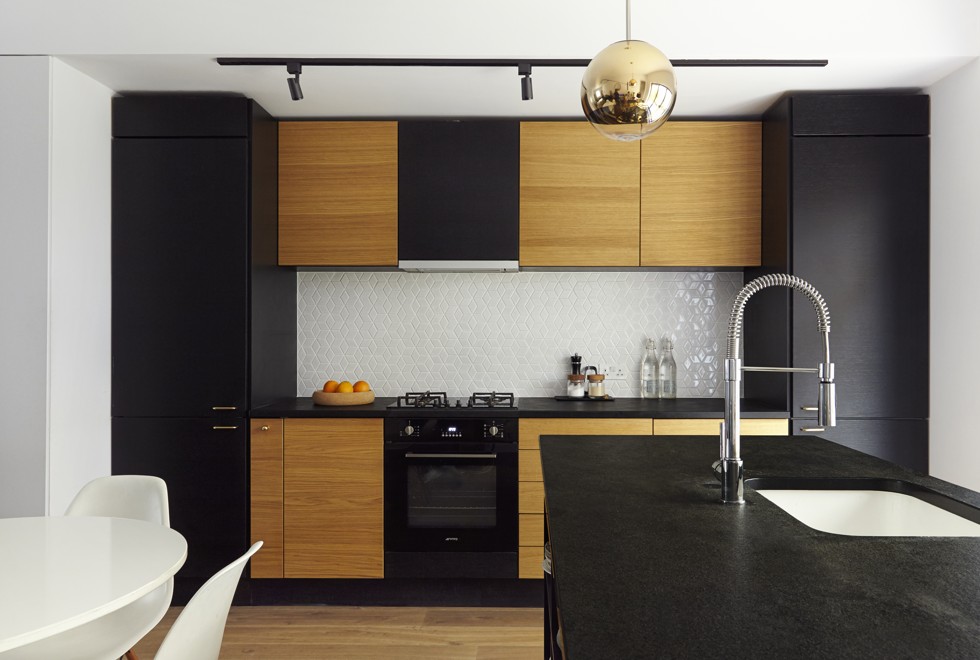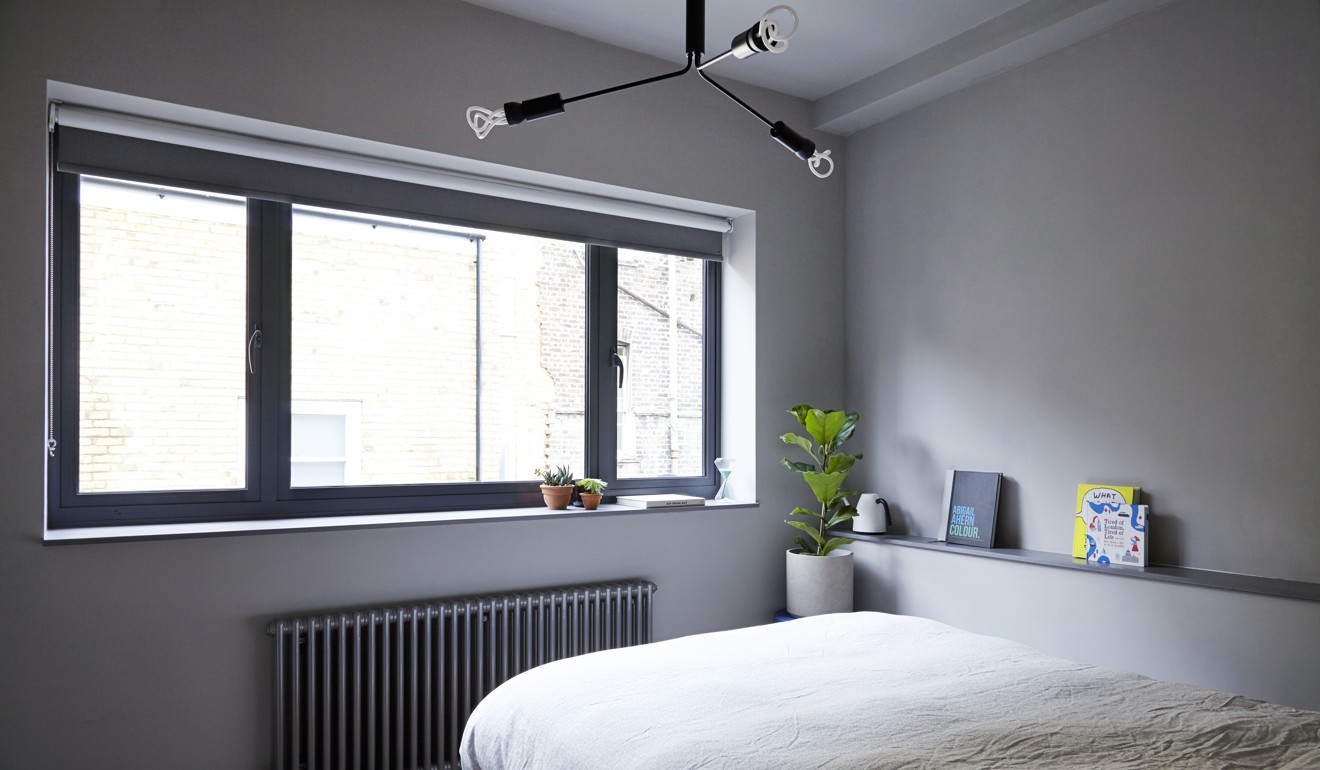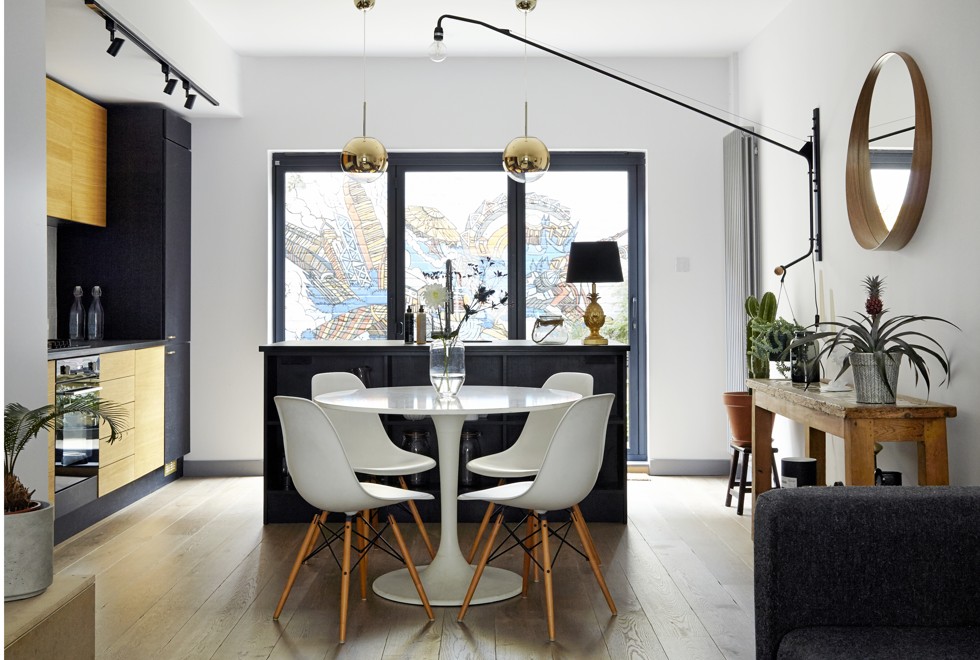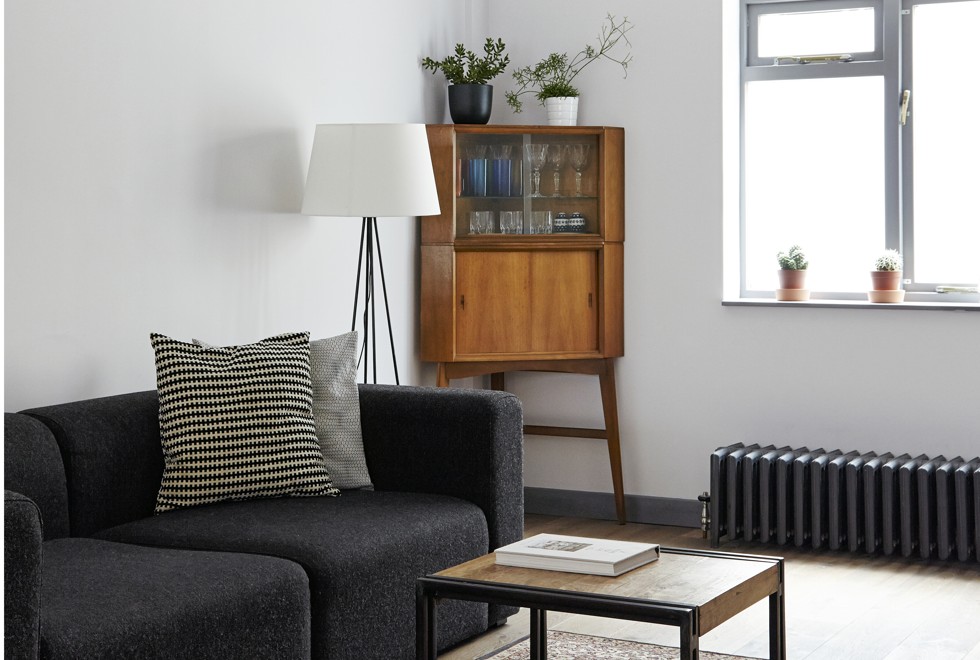
Inside Hong Kong-raised interior designer’s hip east London home
Sharon Toong unites mid-century and vintage items with modern aesthetics and graffiti art in her Dalston house
It’s no surprise that Hong Kong-bred, London-based architect and interior designer Sharon Toong wanted to live in the buzzing Dalston district. Filled with trendy restaurants and bars, the area is so famous as a haunt of young creatives that even hipster magazine Vice dubbed it “London’s coolest hangout”.
But the very things about Dalston that appealed to Toong – the creative community and the nightlife – also make it a difficult place in which to live. “It’s busy all the time, day and night,” says Toong, who grew up in Mid-Levels. “So I really wanted my house to be a sanctuary, away from all the hustle and bustle.”
Toong thought finding a quiet bolt-hole in Dalston would be a challenge, but one of the first properties she saw when she began house hunting in 2014, 13 years after moving to Britain, was a two-bedroom, two-storey house on a quiet private road. Far enough from the neighbourhood’s noisy bars yet close to the nearest train station, the house was a hidden gem.
Another plus point was that the 840 sq ft property needed only limited structural changes. Toong removed two awkward walls of glass bricks that divided the living room and kitchen to make the ground-floor space open plan. Upstairs, she enlarged the two bedrooms by moving the bathroom from a prime corner position to sit between the rooms.
[Dalston is] busy all the time, day and night, so I really wanted my house to be a sanctuary, away from all the hustle and bustle
Toong wanted her small garden to pay tribute to Dalston, so decided to commission an artist to paint a large, graffiti-style mural. After plenty of research, Toong fell in love with the work of Bristol-based illustrator Andy Council. “He’s famous for doing cityscapes in the shape of dinosaurs,” Toong says. “My husband [Maciej Woroniecki] and I both trained as architects, so we thought that was really cool.”
But the mural also has a more personal meaning for Toong. “I grew up in Hong Kong and my husband grew up in Sacramento, California, so in the mural there are buildings from both those places,” she says.
Hong Kong landmarks such as Two IFC, the Bank of China Tower and the HSBC Building are featured in the design. The mural also includes the London building in which Toong first met her husband (at architecture firm Stufish’s office, near Kings Cross) and the Dai Show Theatre, in Xishuangbanna, Yunnan province, which they both helped design.
“This is the first house we lived in together and is where we lived when we got married, so the mural is a history of us,” Toong says. Inside the house, the most important thing for Toong, who founded interior design studio House of Sylphina in 2015, was stamping the home with her signature style. “My style is generally urban and when I style a property I like to mix contemporary and vintage pieces,” she says.
One of her trademarks is the use of pendant lights, which feature in every room. “They create a good focal point and help bounce light around,” she says. Toong’s favourites are the three Frandsen copper ball pendant lamps in the stairwell.
As a counterpoint to the shiny, modern lighting, the interior designer filled the house with vintage pieces of furniture. While some of these, such as the side table in the kitchen, were affordable pieces Toong found on eBay, others were sourced through antiques dealers. The 1950s corner cabinet in the living room is particularly close to her heart.
My style is generally urban and when I style a property I like to mix contemporary and vintage pieces
“I’ve moved it around to a few properties and it works really well in the corner here,” she says. “But I love it so much I would make a house work around it.” Conscious that the mid-century furniture and smoked-timber floors throughout the house were extravagant choices, Toong pinched pennies in other rooms. The bathroom walls are clad in affordable Metro tiles, which Toong had laid in a chevron pattern so that they appear “more designer”.
In the bedrooms, Toong installed basic wardrobe frames from Ikea and then designed MDF doors for them. “I had the doors made myself but there’s also a company called Superfront that makes MDF doors for Ikea units,” she says.
It’s this mixture of high-end and affordable, mid-century and contemporary that makes Toong’s house unique. “The house is very efficient and has everything we need,” Toong says. “But it also has character.”


The three Frandsen ball pendant lights (£146/US$204 each) were from Heal’s. The table lamp (on the floor) is an IC T1 High (£328/US$459), by Michael Anastassiades for Flos, and came from twentytwentyone.

Tried + tested





